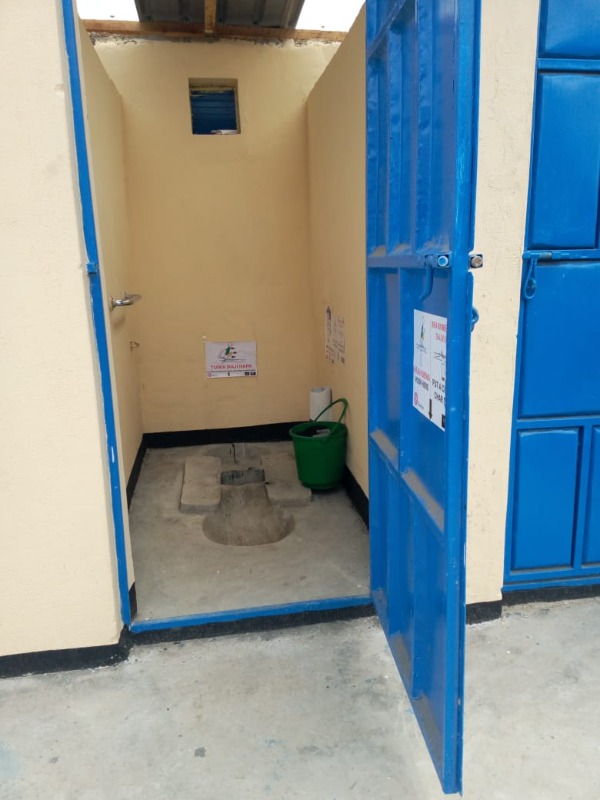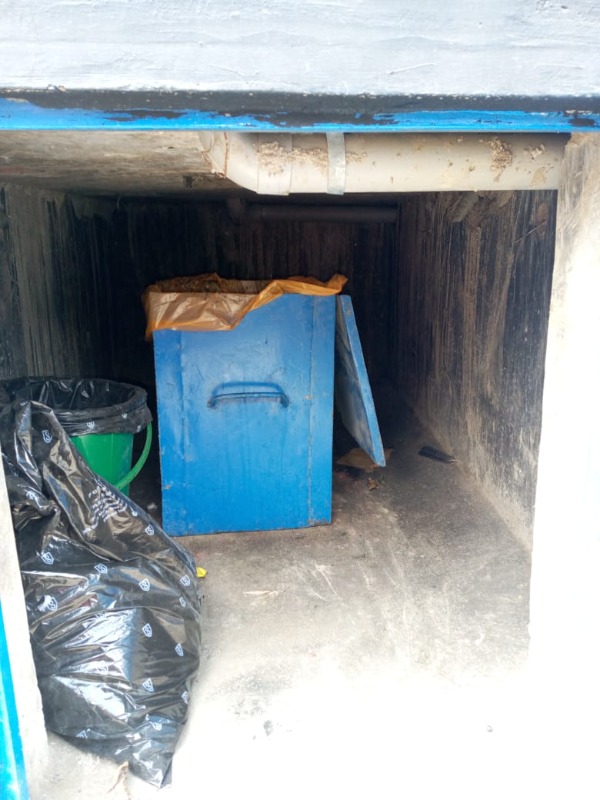- Forum
- categories
- Sanitation systems
- Faecal sludge management (FSM)
- Faecal sludge treatment technologies
- Incineration of UDDT waste at healthcare facilities - request for feedback
Incineration of UDDT waste at healthcare facilities - request for feedback
15.2k views
Re: Incineration of UDDT waste at healthcare facilities - request for feedback
Thanks Jeff,
Great to see some other groups working on the problem of decentralized waste treatment, especially with consideration of CBS. You've got some very well-developed systems for optimizing the combustion or carbonizing process. One of your presentations on the website hints at some ongoing findings with burning poop directly, even after thermal drying, such as un-reliable ignition and odor. Any lessons to share?
To be an appropriate solution for this sort of context, we are interested in developing or deploying a much simpler mechanism, in the same ballpark as a De Montfort incinerator (mw-incinerator.info/en/304_Mark_9.html) that is very common here at healthcare facilities for handling sharps and other waste.
Biochar is a great reuse product, but given the small quantity of waste, it may be better to dramatically reduce the volume via incineration in this case.
Have you learned any lessons you can share about wet poop incineration:
Combustion temperatures, poop feed rates, sizing and geometry of combustion chambers, airflow rates, or gas retention time at high temperature to reduce contaminants and odor?
Thanks!
Eli
Great to see some other groups working on the problem of decentralized waste treatment, especially with consideration of CBS. You've got some very well-developed systems for optimizing the combustion or carbonizing process. One of your presentations on the website hints at some ongoing findings with burning poop directly, even after thermal drying, such as un-reliable ignition and odor. Any lessons to share?
To be an appropriate solution for this sort of context, we are interested in developing or deploying a much simpler mechanism, in the same ballpark as a De Montfort incinerator (mw-incinerator.info/en/304_Mark_9.html) that is very common here at healthcare facilities for handling sharps and other waste.
Biochar is a great reuse product, but given the small quantity of waste, it may be better to dramatically reduce the volume via incineration in this case.
Have you learned any lessons you can share about wet poop incineration:
Combustion temperatures, poop feed rates, sizing and geometry of combustion chambers, airflow rates, or gas retention time at high temperature to reduce contaminants and odor?
Thanks!
Eli
Mechanical engineer and WASH implementer
The following user(s) like this post: HarryTams
Please Log in to join the conversation.
You need to login to replyRe: Incineration of UDDT waste at healthcare facilities - request for feedback
Eli,
Biomass Controls has thermally treated UDDT fecal sludge in Alaska. The UDDT's in use have a fan that dry the feces to 35% MC. We pre-process using a grinder and also add a little cardboard to increase energy.
More information@ www.biomasscontrols.com.
Biomass Controls has thermally treated UDDT fecal sludge in Alaska. The UDDT's in use have a fan that dry the feces to 35% MC. We pre-process using a grinder and also add a little cardboard to increase energy.
More information@ www.biomasscontrols.com.
Jeff Hallowell
Biomass Controls PBC
Biomass Controls PBC
The following user(s) like this post: HarryTams
Please Log in to join the conversation.
You need to login to replyIncineration of UDDT waste at healthcare facilities - request for feedback
Hello SuSanA Community,
I've been working on a research project evaluating container-based sanitation at healthcare facilities in Kenya for the past year. The toilets are urine-diverting toilets (picture below). Urine and anal washing liquid is disposed of in nearby pits, or piped to septic tank. Garbage is diverted to a separate bin for disposal (see the pipe in the toilet picture and separate bin in sub-floor enclosure).
So far, the poop and cover material (charcoal dust) is transported to a local facility for treatment and conversion to fuel products, which is great. A challenge comes when we want to evaluate the toilets at locations farther from the treatment and reuse plant. Being a healthcare facility, we are limited by onsite treatment options that might be possible in other contexts. We can't take up large amounts of space, or allow people to see or come in contact with faecal waste. Imagine how health officials would respond to onsite composting, for example. Being waste from a healthcare facility, there's heightened concern about pathogens and reuse.
One option we are considering is a small onsite incinerator. It would eleminate any pathogens and dramatically reduce the waste volume without excessive handling. I've done some looking around and haven't found tons of information, and no successful examples of cases where faecal waste is directly incinerated. To make this option feasible, the UDDT waste would need to be directly loaded into the incinerator (no drying in the sun at a hospital) and burn with minimal offensive odor. We expect around 30-100kg of waste per week.
We are considering using waste oil, diesel, or kerosene as a startup fuel to get it hot. One source (www.susana.org/en/knowledge-hub/resource.../details/443?pgrid=1) found poop could be burned well above 850 degrees C, but only after drying in the sun. The moisture content of the waste will be less than fresh poop (due to added dry material), but still higher than ideal for burning.
Curious if anyone has any experience here or example designs. I wonder if there are some obvious reasons this hasn't been tested more:
Eli
I've been working on a research project evaluating container-based sanitation at healthcare facilities in Kenya for the past year. The toilets are urine-diverting toilets (picture below). Urine and anal washing liquid is disposed of in nearby pits, or piped to septic tank. Garbage is diverted to a separate bin for disposal (see the pipe in the toilet picture and separate bin in sub-floor enclosure).
So far, the poop and cover material (charcoal dust) is transported to a local facility for treatment and conversion to fuel products, which is great. A challenge comes when we want to evaluate the toilets at locations farther from the treatment and reuse plant. Being a healthcare facility, we are limited by onsite treatment options that might be possible in other contexts. We can't take up large amounts of space, or allow people to see or come in contact with faecal waste. Imagine how health officials would respond to onsite composting, for example. Being waste from a healthcare facility, there's heightened concern about pathogens and reuse.
One option we are considering is a small onsite incinerator. It would eleminate any pathogens and dramatically reduce the waste volume without excessive handling. I've done some looking around and haven't found tons of information, and no successful examples of cases where faecal waste is directly incinerated. To make this option feasible, the UDDT waste would need to be directly loaded into the incinerator (no drying in the sun at a hospital) and burn with minimal offensive odor. We expect around 30-100kg of waste per week.
We are considering using waste oil, diesel, or kerosene as a startup fuel to get it hot. One source (www.susana.org/en/knowledge-hub/resource.../details/443?pgrid=1) found poop could be burned well above 850 degrees C, but only after drying in the sun. The moisture content of the waste will be less than fresh poop (due to added dry material), but still higher than ideal for burning.
Curious if anyone has any experience here or example designs. I wonder if there are some obvious reasons this hasn't been tested more:
- Is burning wet poop, even at very high temperatures just not possible without creating a huge stinking mess?
- Does it require elaborate controls or material that are not feasible in low-income contexts?
- Are there any other treatment options that might be preferable for onsite treatment/disposal at a healthcare facility?
Eli
Mechanical engineer and WASH implementer
Attachments:
The following user(s) like this post: Carol McCreary, HarryTams, bowenarrow
Please Log in to join the conversation.
You need to login to reply
Share this thread:
- Forum
- categories
- Sanitation systems
- Faecal sludge management (FSM)
- Faecal sludge treatment technologies
- Incineration of UDDT waste at healthcare facilities - request for feedback
Recently active users. Who else has been active?
Time to create page: 0.136 seconds









